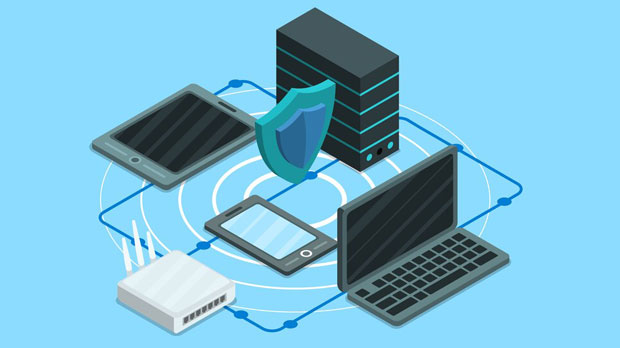Web proxies have become essential tools for internet users who wish to maintain anonymity, bypass geographical restrictions, or secure their online activities. The role of a web proxy is to act as an intermediary between the user's device and the internet, ensuring that requests are filtered through a third-party server. One of the most commonly discussed protocols in this area is SOCKS5, which provides an advanced level of privacy and security. But, does a web proxy support the SOCKS5 protocol? In this article, we will delve into the specifics of web proxies, how they differ from SOCKS5, and whether they are compatible. Understanding the functionality and limitations of both technologies will help users make informed decisions when choosing a proxy service. Understanding Web Proxy TechnologyA web proxy is a server that stands between the user’s device and the internet, forwarding requests from the user to the destination server and vice versa. It primarily serves two purposes: enhancing security and enabling users to bypass network restrictions. When you use a web proxy, your request to access a website doesn’t go directly to the website’s server. Instead, it is first directed to the proxy server. The proxy then makes the request to the actual server on your behalf. This process hides your original IP address, making it appear as though the request is coming from the proxy server. In turn, this provides some level of anonymity and can be useful for users looking to avoid censorship or geographic restrictions.Web proxies can come in two main types: HTTP proxies and HTTPS proxies. HTTP proxies are typically used for browsing web pages, while HTTPS proxies are used for secure, encrypted communication. They are both limited by the types of traffic they can handle, focusing primarily on web browsing and HTTP/HTTPS traffic.SOCKS5 Protocol: What It Is and How It WorksSOCKS5 (Socket Secure version 5) is a protocol used for routing network traffic through a proxy server, offering greater flexibility and security than traditional web proxies. SOCKS5 can handle various types of traffic, including HTTP, HTTPS, FTP, and even peer-to-peer (P2P) connections like torrenting, making it a more versatile option compared to HTTP or HTTPS proxies.One of the key features of SOCKS5 is its support for both TCP and UDP connections, which is a significant advantage for activities that require high-performance network traffic, such as gaming, video streaming, and large data transfers. The protocol also supports authentication, meaning only authorized users can access the proxy, further enhancing security.Furthermore, SOCKS5 does not modify or rewrite the data being transmitted. This is important because it ensures that the traffic remains unaltered, providing a transparent and reliable communication pathway. Key Differences Between Web Proxies and SOCKS5While both web proxies and SOCKS5 serve as intermediaries between users and the internet, there are some significant differences that set them apart.1. Traffic Compatibility: Web proxies are generally limited to HTTP and HTTPS traffic, meaning they only work for web browsing. In contrast, SOCKS5 can handle a broader range of traffic types, including FTP, POP3, SMTP, and even P2P. This makes SOCKS5 a more versatile choice for users who need to route various types of traffic.2. Performance and Speed: SOCKS5 tends to offer better performance for high-speed and high-volume traffic because it doesn’t alter or inspect the data. Web proxies, especially those that operate over HTTP/HTTPS, may slow down the connection due to additional processing and encryption.3. Security and Anonymity: While both options offer some level of security, SOCKS5 is often considered superior due to its ability to handle encrypted data and support for authentication mechanisms. Web proxies may provide anonymity but don’t offer the same robust encryption and privacy features.4. Use Cases: Web proxies are typically used for simple web browsing, bypassing geo-restrictions, or accessing content blocked by firewalls. SOCKS5 is preferred for more complex scenarios, such as accessing a variety of services, torrenting, or gaming, where security, privacy, and performance are crucial.Can Web Proxy Support SOCKS5?The short answer is: typically, no. Web proxies are designed specifically for handling HTTP/HTTPS traffic, while SOCKS5 is a more general-purpose protocol capable of handling a variety of traffic types. However, some advanced proxy services may offer SOCKS5 support alongside web proxy functionality, but this is not the norm.Web proxies generally don’t natively support SOCKS5 because the protocols are designed with different purposes in mind. A web proxy is optimized for handling requests from web browsers, focusing on web traffic alone. SOCKS5, on the other hand, is a low-level protocol that can handle a wide variety of network traffic types. Implementing SOCKS5 support in a web proxy would require significant modifications to the underlying infrastructure and software.That being said, some proxy services may offer hybrid solutions, where they allow you to use SOCKS5 in combination with a web proxy. These setups are typically more advanced and are targeted at users who need to route various types of traffic through a single proxy service. Benefits of Using SOCKS5 Over Web ProxyFor users who require more than just basic browsing capabilities, SOCKS5 offers several advantages over traditional web proxies.1. Versatility: SOCKS5 supports a wide range of protocols, making it suitable for various use cases, from web browsing to secure file transfers and peer-to-peer connections.2. Improved Performance: SOCKS5 doesn’t modify or rewrite data, which results in faster speeds and a more stable connection compared to web proxies that might require additional processing.3. Better Security: SOCKS5 supports authentication, which adds an extra layer of security. It also allows users to securely route data without worrying about data modification or leakage.4. Bypassing Restrictions: Since SOCKS5 works at a lower network level, it can be more effective at bypassing firewalls and network restrictions compared to traditional web proxies.ConclusionWeb proxies and SOCKS5 protocols serve different needs and offer varying levels of security, flexibility, and performance. While web proxies are excellent for basic browsing and anonymity, SOCKS5 provides enhanced functionality for users who require more comprehensive support for different types of network traffic. Typically, web proxies do not support SOCKS5 natively, as the two serve distinct purposes and are designed to handle different traffic types. However, users who need the advantages of both may be able to find hybrid proxy services that combine web proxy and SOCKS5 functionality. Ultimately, choosing between a web proxy and SOCKS5 depends on the specific needs of the user. Those requiring versatile, secure, and high-performance traffic routing should consider using SOCKS5, while those focused primarily on web browsing and bypassing simple restrictions may find that a web proxy is sufficient.
Jul 08, 2025



































































